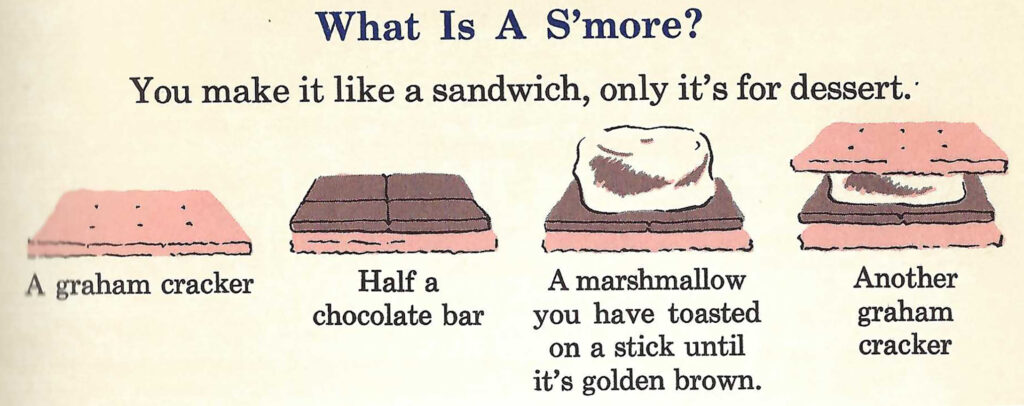
Dorri Partain
Contributor
It’s a tasty gooey treat that’s moved from the campfire to the gourmet kitchen with multiple variations that may inspire you to ask for “s(ome) more.”
So simple one doesn’t even need a recipe, the combination of a graham cracker, piece of milk chocolate, and a roasted marshmallow first appeared in early publications simply as a “graham cracker sandwich” to feed 16.
In the 1927 handbook, “Tramping and Trailing with the Girl Scouts,” the sandwich recipe calls for eight chocolate bars, 16 graham crackers, and 16 marshmallows, with directions to toast the marshmallow before sandwiching them with the chocolate between the crackers. A very similar recipe appears in the promotional cook book, “A Book of 150 Recipes Prepared with Campfire Marshmallows,” with the notation that it was popular amongst Boy and Girl Scouts.
Toasting marshmallows was already a popular campfire pastime when the Imperial Candy Co. and Redel Candy Corp. of Milwaukee began producing Campfire Marshmallows in 1917. As for the other ingredients, the Hershey’s chocolate bar was introduced by Milton Hershey (1857-1945) in 1900 and the graham cracker developed by Sylvester Graham (1794-1851) during the 1840’s.
The recipe above for a single S’more appears in the 1960 Camp Fire Girls publication, “The Blue Bird Wish Comes True,” which also explains campfire safety and how to toast on a stick.
The Camp Fire Girls were first organized in 1910 by Dr. Luther H. Gulick and his wife Charlotte. Three years later they expanded to include younger girls as Blue Birds, named after a play written in 1908 by Maurice Maeterlinck by the same name.
While toasting marshmallows and gathering around the campfire eating S’mores may produce lasting memories, technology has also produced electric and microwave S’mores makers, as well as ready to eat versions.


















